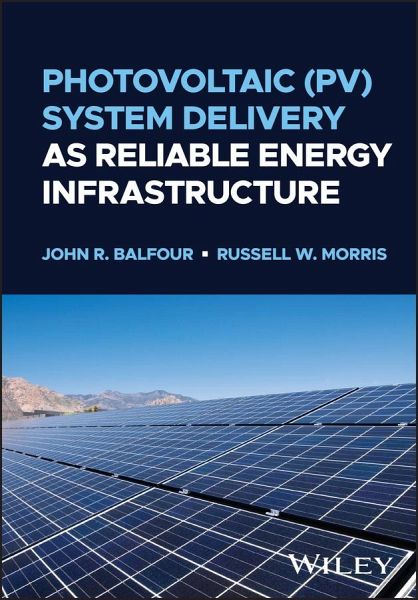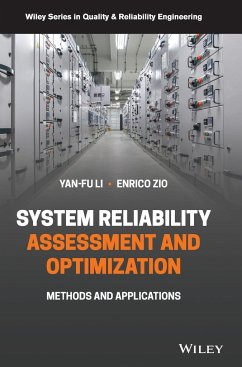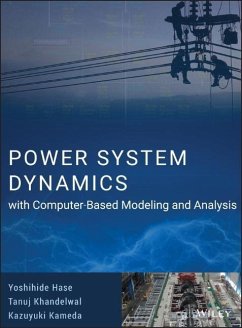
Photovoltaic (Pv) System Delivery as Reliable Energy Infrastructure
Versandkostenfrei!
Versandfertig in über 4 Wochen
130,99 €
inkl. MwSt.
Weitere Ausgaben:

PAYBACK Punkte
65 °P sammeln!
A practical guide to improving photovoltaic power plant lifecycle performance and output Photovoltaic (PV) System Delivery as Reliable Energy Infrastructure introduces a Preemptive Analytical Maintenance (PAM) for photovoltaic systems engineering, and the Repowering(TM) planning approach, as a structured integrated system delivery process. A team of veteran photovoltaics professionals delivers a robust discussion of the lessons learned from mature industries--including PV, aerospace, utilities, rail, marine, and automotive--as applied to the photovoltaic industry. The book offers real-world "t...
A practical guide to improving photovoltaic power plant lifecycle performance and output Photovoltaic (PV) System Delivery as Reliable Energy Infrastructure introduces a Preemptive Analytical Maintenance (PAM) for photovoltaic systems engineering, and the Repowering(TM) planning approach, as a structured integrated system delivery process. A team of veteran photovoltaics professionals delivers a robust discussion of the lessons learned from mature industries--including PV, aerospace, utilities, rail, marine, and automotive--as applied to the photovoltaic industry. The book offers real-world "technical and fiscal" examples of the impact of photovoltaics to all stakeholders during the concept, specification, operations, maintenance, and Repowering(TM) phases. In each chapter, readers will learn to develop RAMS specifications, reliability data collection, and tasks while becoming familiar with the inherent benefits of how these affect the cost of design and development, maintenance, spares, and systems operation. The authors also explain when and how to consider and implement Repowering(TM), plant upgrades and the considerations from concept through retirement and disposal of the plant. Readers will also find: * A thorough introduction to Preemptive Analytical Maintenance (PAM), including systems engineering, lifecycle planning, risk management, risk assessment, risk reduction, as compared to the historic utility models, * An in-depth treatment of the modern photovoltaic industry, including economic factors and the present endlessly evolving state of technology, * Constructive discussions and application of systems engineering, including RAMS and System Engineering practices and solutions, * Extensive explorations and application of data collection, curation, and analysis for PV systems, including advanced sensor technologies. Perfect for all new through to experienced photovoltaic design and specification engineers, photovoltaic plant owners, operators, PV asset managers and all interested stakeholders. Photovoltaic (PV) System Delivery as Reliable Energy Infrastructure will also earn a place in the libraries of utilities, engineering, procurements, construction professionals and students.













